How to Turn Your Drawings into a Professional Portfolio
Creating a professional portfolio is a vital step for any artist looking to showcase their talent and attract potential clients or employers. Your portfolio is not just a collection of your drawings; it’s a reflection of your unique artistic identity and a gateway to new opportunities. Think of it as your personal gallery where you can display your best work, tell your story, and make a lasting impression. So, how do you transform your drawings into a polished portfolio that stands out? Let’s dive into the essential steps that will help you craft a portfolio that not only highlights your skills but also resonates with your audience.
Before you even start selecting pieces for your portfolio, it’s crucial to understand who will be viewing your work. Are you aiming to attract art directors, potential clients, or perhaps gallery owners? Identifying your target audience allows you to tailor your portfolio to their preferences and expectations. Think about the following:
- What type of work do they typically look for?
- What styles resonate with them?
- What format do they prefer for viewing artwork?
By answering these questions, you can make informed choices about the pieces you include and how you present them, ensuring your portfolio speaks directly to your intended viewers.
Now that you know your audience, it’s time to select the artwork that will populate your portfolio. It’s essential to focus on quality over quantity. Instead of showcasing every piece you’ve ever created, choose a selection of your best work that highlights your versatility and artistic range. Consider including:
- Your strongest pieces that showcase your unique style.
- A variety of styles to demonstrate your adaptability.
- Artworks that resonate with your audience's interests.
By curating your selection carefully, you’ll create a portfolio that not only showcases your abilities but also tells a compelling story about your artistic journey.
Your portfolio should shine a spotlight on your strongest pieces. These artworks should be the ones that not only showcase your technical skills but also resonate emotionally with your audience. Think of these pieces as the headliners of your portfolio—what do you want people to remember the most? Ensure that these standout pieces are presented prominently, as they will be the ones that leave a lasting impression.
Including personal projects in your portfolio can add a layer of depth and insight into your creative process. These pieces often reflect your true passions and can set you apart from other professionals. They tell a story about your artistic journey and can showcase your willingness to experiment and grow. Personal projects can be anything from sketchbooks, concept art, or even community art initiatives that you’ve participated in.
If you’ve collaborated with other artists or participated in group projects, make sure to include those in your portfolio as well. Collaborative work demonstrates your ability to work with others, adapt to different styles, and contribute to a team. It reflects your versatility and can highlight your ability to thrive in various artistic contexts, which is a valuable trait in the art world.
A well-organized portfolio enhances the viewer's experience. Create a logical flow by grouping similar works together and considering the order in which you present your pieces. This organization can help tell a cohesive story about your artistic journey. For instance, you might start with your most recent work and progress to earlier pieces, showing your growth as an artist.
When it comes to presenting your portfolio, you have to decide between a physical or digital format. Each has its own advantages, and the choice largely depends on your target audience and the industry standards. Digital portfolios are incredibly versatile and can be easily shared online, reaching a wider audience. However, physical portfolios offer a tactile experience that allows viewers to appreciate the texture and detail of your work up close.
Digital portfolios can include interactive elements, such as videos or animations, making them engaging and dynamic. They are perfect for artists who want to showcase their work globally, as they can be easily shared via social media and websites. Plus, you can update them regularly to keep your portfolio fresh and relevant.
On the other hand, physical portfolios can be a powerful tool during interviews or exhibitions. They allow viewers to experience your work in a way that digital formats can't replicate. When presenting a physical portfolio, ensure that the images are printed on high-quality paper and that the layout is clean and professional.
Presentation is key when it comes to portfolio creation. Use high-quality images, proper lighting, and thoughtful layouts to ensure your artwork is displayed in the best possible way. This attention to detail can make a significant difference in how your work is perceived. Remember, your portfolio is a reflection of you as an artist, so make sure it looks polished and professional.
An artist statement is an essential component of your portfolio, as it provides context for your work. It should convey your artistic vision, influences, and the concepts behind your pieces. A well-written artist statement helps viewers connect with your art on a deeper level and understand the story you are trying to tell.
In today’s digital age, having a portfolio website is a must. It serves as a central hub for your work and allows for easy updates. Your website can also include additional features like a blog, contact information, and links to your social media profiles, enhancing your professional presence online.
Q: How many pieces should I include in my portfolio?
A: It’s best to include around 10-20 of your strongest pieces. Quality is more important than quantity.
Q: Should I include older works in my portfolio?
A: Only include older works if they demonstrate significant skill or development. Focus on showcasing your best and most relevant art.
Q: How often should I update my portfolio?
A: You should update your portfolio regularly, especially after completing new projects or works that showcase your growth as an artist.

Understanding Your Audience
When it comes to crafting a stunning portfolio, understanding your audience is absolutely crucial. Think of your portfolio as a conversation between you and potential clients or employers. If you don’t know who you’re talking to, how can you tailor your message? Imagine trying to sell ice cream to someone who’s allergic to dairy—it just won’t work! By identifying your target audience, you can make informed decisions about which pieces to showcase and how to present them.
Start by asking yourself a few key questions: Who are the people most likely to appreciate my work? Are they art directors, gallery owners, or perhaps fellow artists? Understanding their preferences can guide your selection process. For instance, if your audience consists mainly of art directors looking for commercial illustrations, your portfolio should highlight pieces that align with their aesthetic and functional needs.
Moreover, consider the industry standards and trends that resonate with your audience. Researching the types of portfolios that have successfully attracted attention in your field can be incredibly beneficial. This can help you identify not only the style and medium that appeal to your audience but also the overall presentation format. Are they inclined towards minimalist designs, or do they prefer something more vibrant and eclectic? Tailoring your portfolio to these preferences can significantly enhance its impact.
In addition to understanding their aesthetic preferences, think about the emotional connection you want to establish. Your artwork should evoke feelings, tell stories, or provoke thoughts. By knowing what resonates with your audience, you can choose pieces that not only showcase your skills but also connect with them on a deeper level. Remember, art is not just about visuals; it’s about creating an experience.
To help clarify your audience's characteristics, consider creating a simple table that outlines their key attributes:
| Audience Type | Key Interests | Preferred Styles |
|---|---|---|
| Art Directors | Commercial viability, trends | Clean, professional |
| Gallery Owners | Unique perspectives, creativity | Eclectic, bold |
| Fellow Artists | Technique, innovation | Varied, experimental |
Once you've gathered this information, you can begin to curate your portfolio with a clear vision in mind. Remember, it’s not just about showcasing your best work; it’s about telling a story that resonates with your audience. So, take the time to understand who they are, what they value, and how your art can speak to them. This understanding will not only help you create a more impactful portfolio but also pave the way for meaningful connections in your artistic journey.

Choosing the Right Artwork
When it comes to creating a stunning portfolio, is absolutely crucial. Think of your portfolio as a showcase of your artistic identity; it should reflect not just your skills but also your unique creative voice. So, how do you go about selecting the pieces that will make your portfolio truly shine? First, it’s essential to focus on quality over quantity. You don’t need to include every piece you’ve ever created; instead, pick the artworks that you feel best represent your abilities and style.
Consider showcasing a variety of styles and techniques in your portfolio. This not only demonstrates your versatility but also allows potential clients and employers to see the breadth of your skills. For example, if you specialize in both digital and traditional art, including pieces from both mediums can be a great way to highlight your adaptability. You might even consider organizing your artwork by themes or styles, which can help create a cohesive narrative throughout your portfolio.
As you sift through your collection, ask yourself some important questions:
- Which pieces do I feel most proud of?
- What works have received the best feedback from peers or mentors?
- Are there any artworks that showcase a specific technique or skill that I want to emphasize?
Your strongest pieces should take center stage. These are the artworks that not only showcase your unique style but also highlight your technical skills. Think of them as the “main characters” of your portfolio; they should command attention and resonate with your audience. It's like curating an art exhibit—each piece should contribute to the overall experience and narrative you want to convey.
Don't forget to include your personal projects! These works often reveal your passion and creativity, giving viewers a glimpse into your artistic journey. Personal projects can be a powerful way to set yourself apart from other professionals in the field, as they often showcase your willingness to explore new ideas and push boundaries. Maybe you created a series based on your travels or a collection inspired by a particular theme—whatever it is, these pieces can add depth and personality to your portfolio.
Lastly, if you've had the opportunity to collaborate with other artists or work on joint projects, be sure to include those in your portfolio as well. Collaborative works can demonstrate your ability to work within different artistic contexts and highlight your teamwork skills. It’s like showing off your ability to play in a band—while each musician has their own style, the magic happens when you blend those styles together to create something new and exciting.
In summary, choosing the right artwork for your portfolio is about more than just picking pretty pictures. It’s about telling your story, showcasing your skills, and connecting with your audience. So take your time, be thoughtful in your selections, and remember: your portfolio is a reflection of you as an artist.

Highlighting Your Best Work
When it comes to creating a portfolio that truly stands out, is essential. Think of your portfolio as a showcase—a gallery that reflects not just what you can do, but what you do best. So, how do you choose which pieces deserve the spotlight? Start by considering the following criteria:
- Technical Skill: Select pieces that demonstrate your highest level of craftsmanship. This could be intricate line work, masterful shading, or stunning color palettes.
- Unique Style: Your portfolio should reflect your personal artistic style. Choose works that are unmistakably yours, pieces that speak to your creative voice.
- Emotional Impact: Art is meant to evoke feelings. Highlight pieces that have resonated with others or that you feel strongly about.
- Relevance to Your Audience: If you know your target audience, pick works that align with their interests or needs. This can make your portfolio more appealing to potential clients or employers.
Now, imagine walking into an art gallery where the first thing you see is a stunning piece that draws you in. That’s the effect your best work should have on viewers. You want them to stop, take a moment, and truly appreciate what they’re seeing. To achieve this, consider the following:
- Placement: The first piece in your portfolio should be your strongest work. This sets the tone for everything that follows.
- Variety: While it’s important to highlight your best work, don’t just stick to one style. Showcasing a range of techniques and mediums can demonstrate your versatility as an artist.
- Storytelling: Arrange your pieces to tell a story. Perhaps start with your early works and progress towards your most recent pieces, showing your growth as an artist.
Additionally, don’t shy away from including contextual information about your selected pieces. A brief description can help viewers understand the thought process and inspiration behind each work. This not only enhances their appreciation but also creates a deeper connection with your audience. For example, if you painted a piece inspired by a personal experience, share that story—it makes your art relatable and memorable.
Finally, remember that your portfolio is a dynamic entity. As you evolve as an artist, so should your portfolio. Regularly update it to reflect your best and latest work. This not only keeps your portfolio fresh but also shows potential clients and employers that you are active and engaged in your craft.
By carefully selecting and highlighting your best work, you can create a portfolio that not only showcases your skills but also tells your unique artistic story. So, take the time to curate your collection thoughtfully, and you’ll be well on your way to impressing your audience!
Q: How many pieces should I include in my portfolio?
A: Aim for a balance between showcasing your best work and maintaining a concise presentation. Typically, 10-20 pieces is a good range.
Q: Should I include older works in my portfolio?
A: Only include older works if they demonstrate your best skills or unique style. Otherwise, focus on more recent pieces that reflect your current capabilities.
Q: How often should I update my portfolio?
A: It’s a good practice to update your portfolio every 6 months or whenever you complete a significant project that you feel proud of.
Q: How do I choose the right format for my portfolio?
A: Consider your audience and industry standards. Digital portfolios are great for accessibility, while physical portfolios can make a strong impression in face-to-face meetings.
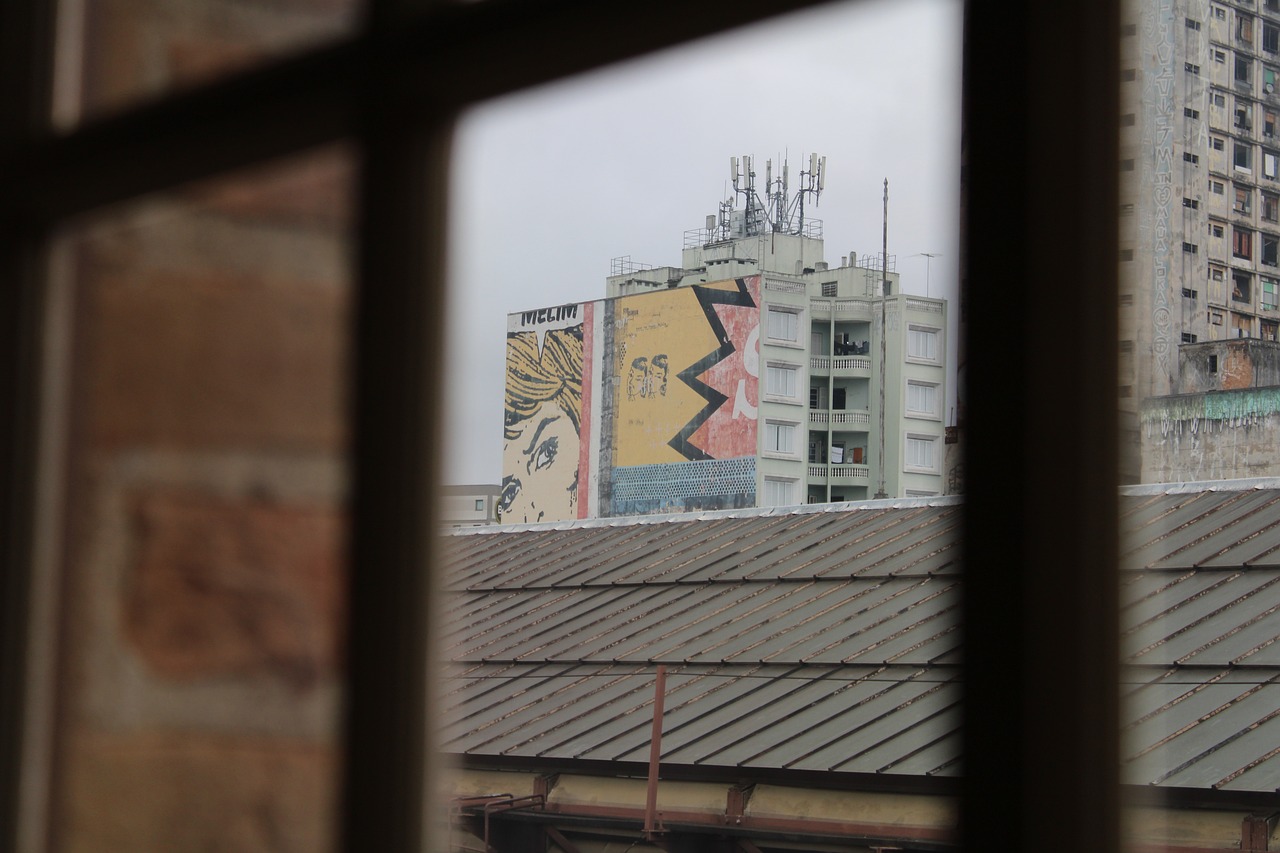
Incorporating Personal Projects
When it comes to building a portfolio that truly represents you as an artist, is a game changer. These projects are not just mere additions; they are the heart and soul of your creative journey. They can reveal your passion, showcase your unique style, and highlight the skills you’ve honed over time. Think of your personal projects as your artistic diary, capturing your thoughts, experiments, and inspirations.
One of the most captivating aspects of personal projects is their ability to tell a story. They provide a glimpse into your creative process and the evolution of your work. For example, if you’ve been experimenting with a new medium or style, including these pieces can show potential clients and employers your willingness to explore and push boundaries. It’s like showing them a behind-the-scenes look at your artistic evolution, which can be incredibly engaging.
Moreover, personal projects often allow for more freedom and creativity compared to commissioned work. You can fully express your artistic voice without the constraints of client expectations. This can lead to innovative ideas and unique pieces that truly reflect who you are as an artist. For instance, if you’ve created a series of illustrations based on a personal theme or experience, these works can resonate more deeply with viewers, inviting them to connect with your art on a personal level.
It’s also essential to think about the variety of personal projects you include. A diverse range can showcase your versatility and adaptability as an artist. Here are some types of personal projects you might consider:
- Experimental Works: Art created to explore new techniques or concepts.
- Passion Projects: Works that revolve around themes or subjects you are passionate about.
- Series: A collection of related pieces that tell a story or explore a concept.
In conclusion, don’t underestimate the power of personal projects in your portfolio. They can set you apart from the crowd, showcasing your individuality and artistic journey. Remember, every piece you include should resonate with your audience and reflect your unique artistic vision. So go ahead, dig into those personal projects, and let them shine in your portfolio!
- Why should I include personal projects in my portfolio?
Personal projects illustrate your passion, creativity, and artistic journey, making your portfolio more relatable and engaging. - How many personal projects should I include?
Quality over quantity is key. Aim for a few standout pieces that truly represent your artistic voice and skills. - Can personal projects be collaborative?
Absolutely! Collaborative personal projects can showcase your teamwork skills and adaptability while still reflecting your personal style.
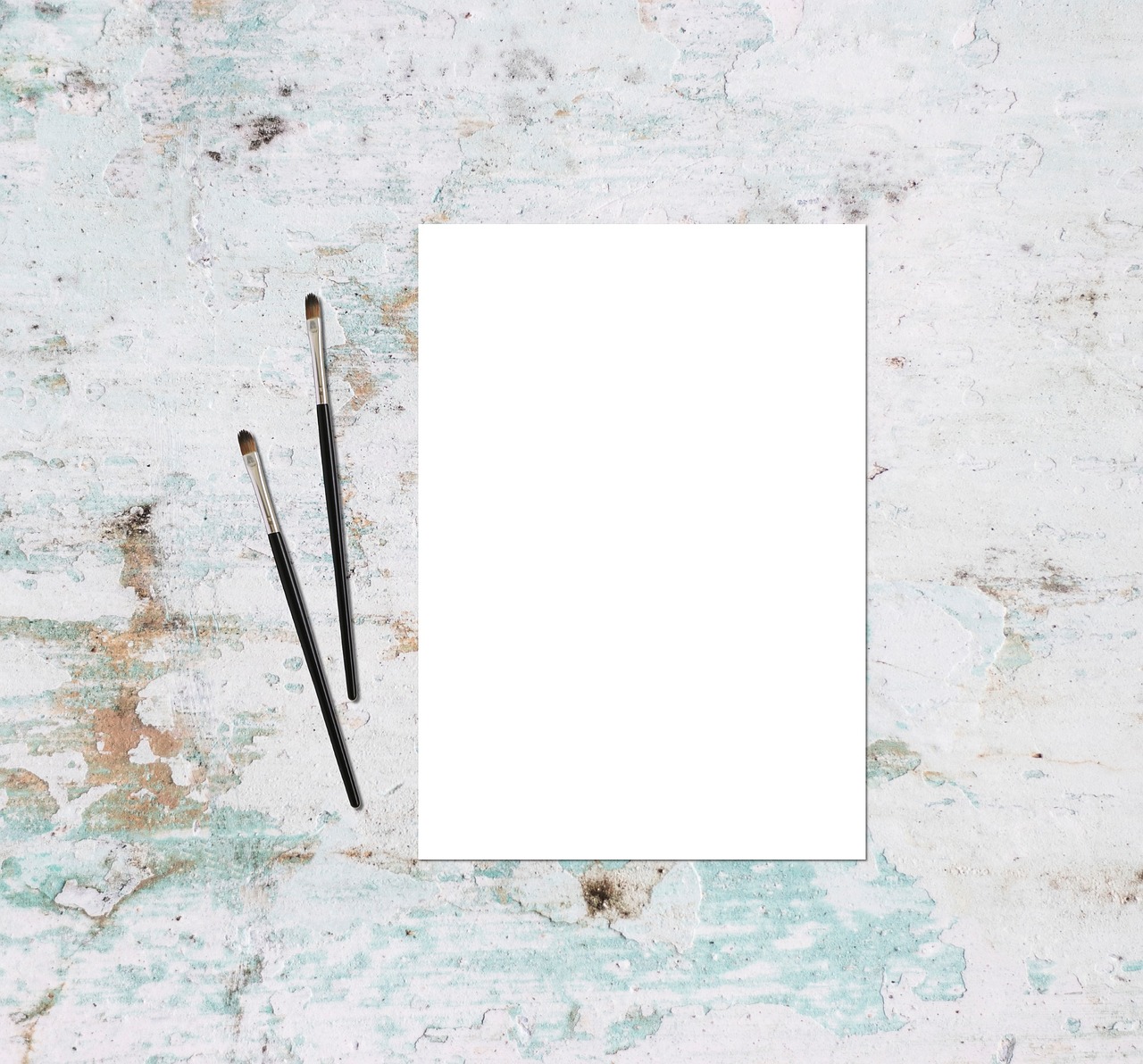
Showcasing Collaborative Work
When it comes to building a standout portfolio, showcasing collaborative work can be a game changer. Why? Because it demonstrates not just your artistic skills, but also your ability to work with others, adapt, and contribute to a collective vision. Think of collaborative projects as the team sports of the art world; they highlight your ability to play well with others while still bringing your unique flair to the table.
Including collaborative pieces in your portfolio can reveal several important aspects of your professional persona:
- Teamwork: It shows that you can collaborate effectively, which is essential in many creative industries.
- Adaptability: Working with different artists or clients requires flexibility and the ability to incorporate various styles and ideas.
- Networking: Featuring projects with other artists can help you tap into their networks, potentially leading to new opportunities.
To effectively showcase your collaborative work, consider the following strategies:
- Choose the Right Projects: Select collaborations that resonate with your artistic identity and demonstrate your strengths. Highlight pieces that have received positive feedback or accolades.
- Provide Context: When presenting collaborative work, it’s crucial to explain your role in the project. Did you lead the creative vision, or were you part of a larger team? Providing this context helps viewers understand your contribution.
- Visual Appeal: Ensure that the presentation of these pieces is visually engaging. Use high-quality images and consider the layout. A well-organized display can make a lasting impression.
For instance, if you collaborated on a mural with a group of artists, include a brief description of the project, your specific responsibilities, and the overall impact of the piece. This not only showcases your artistic abilities but also your capacity to contribute to a larger narrative. Remember, the goal is to make your collaborative work shine just as brightly as your individual pieces.
In conclusion, showcasing collaborative work in your portfolio is not just about displaying what you've done with others; it's about telling a story of creativity, adaptability, and teamwork. So, as you curate your portfolio, don’t shy away from sharing these projects. They could be the key to unlocking new opportunities and connections in your artistic journey.
Q1: Why should I include collaborative work in my portfolio?
A1: Including collaborative work demonstrates your ability to work well with others, showcases your adaptability, and highlights your networking skills, all of which are valuable in the creative industry.
Q2: How do I present my role in a collaborative project?
A2: When presenting collaborative work, provide context by explaining your specific contributions and responsibilities. This helps viewers understand your unique input in the project.
Q3: What types of collaborative projects should I include?
A3: Include projects that resonate with your artistic identity and strengths. Look for pieces that have received positive feedback or that showcase a range of skills and styles.
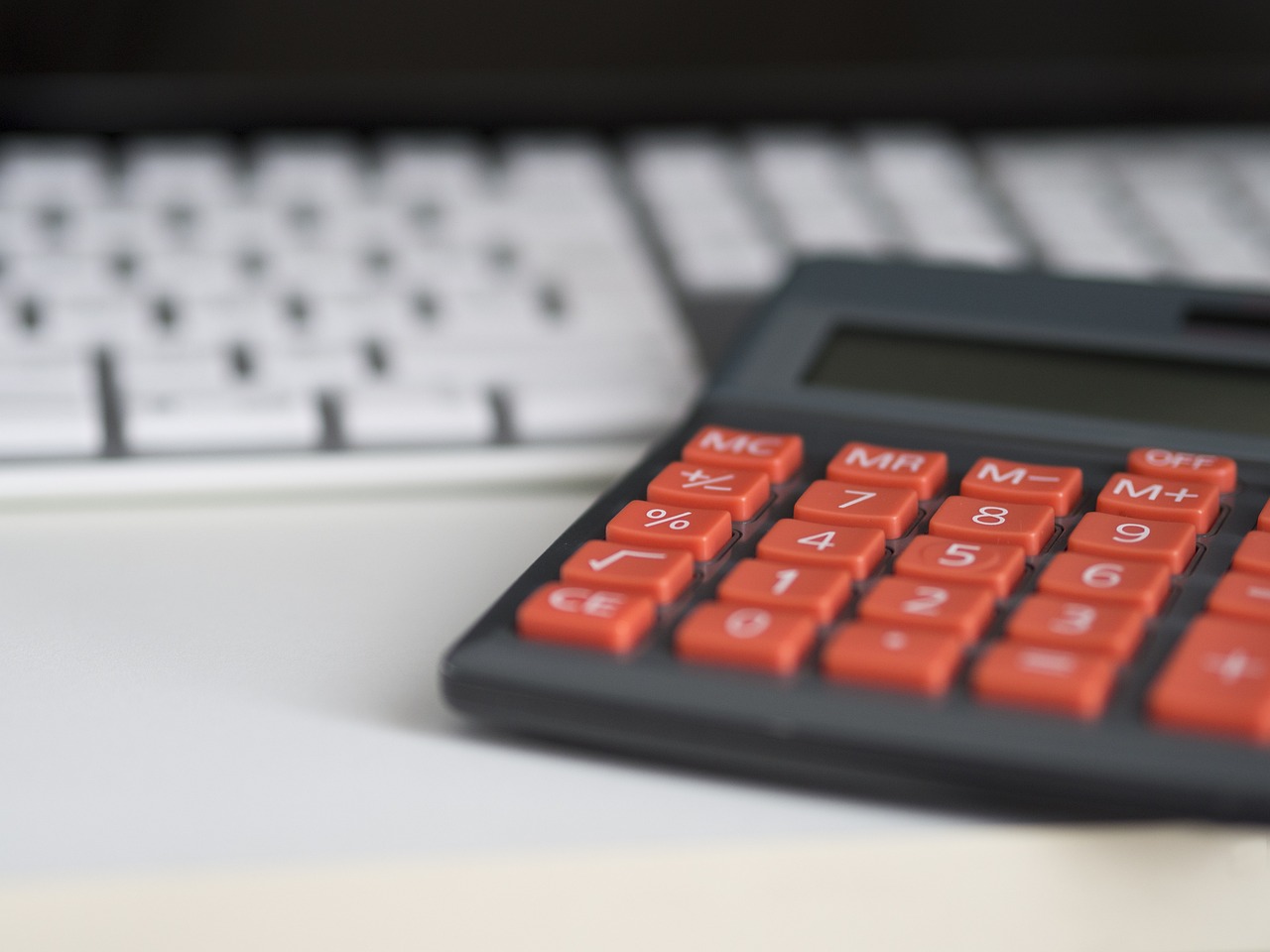
Organizing Your Portfolio
When it comes to organizing your portfolio, think of it as curating an art exhibit. You want your audience to experience a journey through your work, each piece leading naturally to the next. A well-organized portfolio not only enhances the viewer's experience but also showcases your professionalism and attention to detail. Start by grouping similar works together. For example, if you have a series of illustrations, place them in one section. If you dabble in different mediums, such as watercolor and digital art, consider creating distinct sections for each medium. This approach helps in highlighting your versatility while allowing viewers to appreciate the nuances of each style.
Moreover, consider the order in which you present your pieces. Just like a good story, your portfolio should have a beginning, middle, and end. Start with your strongest pieces to captivate your audience right off the bat. This could be your most technically skilled work or pieces that have received the most acclaim. Then, transition into a variety of works that demonstrate your range. Finally, conclude with pieces that leave a lasting impression—perhaps a personal project that embodies your passion or a collaborative piece that showcases your ability to work with others.
It's also important to think about the flow between pieces. Use transitional elements, such as brief descriptions or thematic connections, to guide your audience through your work. For instance, if you have a series of illustrations that tell a story, include a short narrative that links them together. This not only adds depth to your portfolio but also helps viewers engage with your art on a more personal level.
Lastly, don't underestimate the power of feedback. Before finalizing your organization, share your portfolio with trusted peers or mentors. Ask for their opinions on the flow and organization. Sometimes, a fresh pair of eyes can catch things you might have overlooked. Remember, your portfolio is not just a collection of your work; it's a reflection of you as an artist. So, take the time to organize it thoughtfully, and you'll be well on your way to impressing potential clients and employers.
- What is the best way to choose the order of my artwork? Start with your strongest pieces, follow with a variety of works, and end with something memorable.
- Should I include personal projects in my portfolio? Absolutely! Personal projects can showcase your passion and creativity, setting you apart from others.
- How do I know if my portfolio is well-organized? Get feedback from peers or mentors and ensure that your portfolio tells a cohesive story.
- Is it better to have a digital or physical portfolio? It depends on your target audience. Digital portfolios offer versatility, while physical portfolios provide a tactile experience.
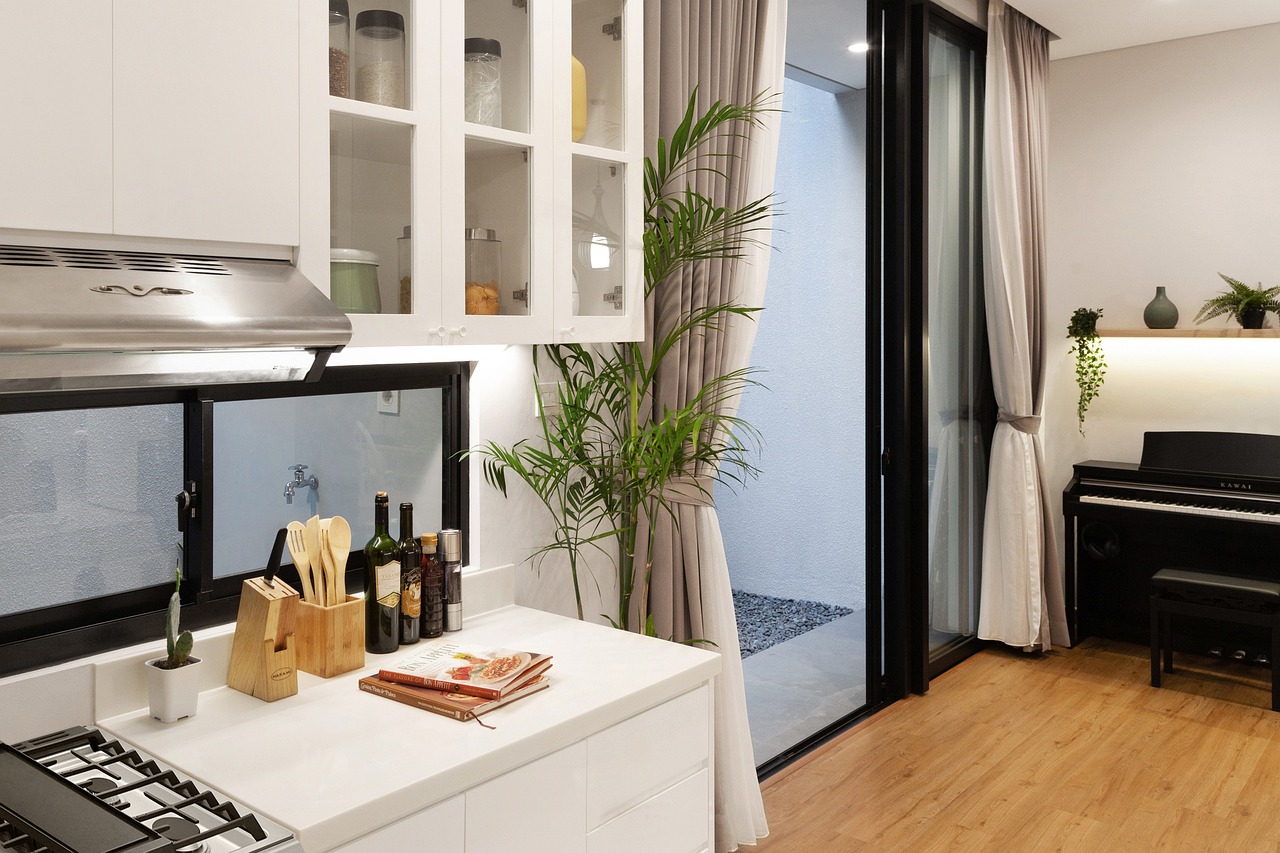
Choosing the Right Format
When it comes to showcasing your artistic prowess, the format of your portfolio plays a pivotal role in how your work is perceived. The choice between a physical or digital portfolio hinges on several factors, including your target audience, industry standards, and personal preferences. Each format has its unique advantages, and understanding these can help you make an informed decision.
Let’s break it down. A digital portfolio is like having your artwork on display in an expansive gallery that anyone can visit from anywhere in the world. With a few clicks, potential clients and employers can access your work, which is a huge plus in today’s online-centric world. Digital portfolios allow you to incorporate interactive elements such as videos, animations, and even links to your social media or blog. This interactivity can create a more engaging experience for the viewer, making your portfolio not just a collection of images, but a journey through your artistic vision.
On the other hand, a physical portfolio has its own charm. Imagine walking into a meeting and presenting a beautifully bound collection of your work, each piece meticulously printed to highlight its details and textures. This tactile experience can leave a lasting impression, especially in traditional art settings where the feel and presence of the artwork matter. A physical portfolio allows viewers to appreciate the craftsmanship behind each piece, something that can sometimes be lost in digital reproduction.
So, how do you decide? Here are a few considerations:
- Target Audience: Are you aiming to impress a tech-savvy client or a traditional gallery? Understanding who will view your work can guide your choice.
- Industry Standards: Research what format is preferred in your field. Some industries lean heavily towards digital, while others may value physical portfolios more.
- Personal Preference: Ultimately, your comfort with presenting your work in either format should also factor into your decision.
In conclusion, whether you opt for a digital portfolio that showcases your work with a modern twist or a physical portfolio that emphasizes the tangible aspects of your art, the key is to ensure that your chosen format aligns with your artistic identity and professional goals. Remember, your portfolio is not just a collection of your work; it’s a reflection of you as an artist. Choose wisely, and let your creativity shine through in the format you select.
Q: What are the benefits of a digital portfolio?
A: Digital portfolios offer accessibility, the ability to showcase a wider range of work, and the option to include multimedia elements that enhance viewer engagement.
Q: Can I have both a physical and digital portfolio?
A: Absolutely! Having both allows you to cater to different audiences and situations, maximizing your opportunities to showcase your work.
Q: How often should I update my portfolio?
A: Regular updates are essential to keep your portfolio relevant. Aim to refresh it at least every six months or whenever you complete significant new work.

Digital Portfolios
In today's digital age, having a digital portfolio is not just a trend; it's a necessity. Imagine being able to showcase your artistic talents with just a few clicks! Digital portfolios offer remarkable versatility and accessibility, allowing you to reach a wider audience than ever before. Whether you're an aspiring artist or a seasoned professional, a well-crafted digital portfolio can significantly enhance your visibility in the art world.
One of the biggest advantages of a digital portfolio is the ease of sharing. You can send a link to potential clients or employers, post it on social media, or even include it in your email signature. This means your work is always just a click away. Plus, you can update your portfolio in real-time, adding new projects and removing older ones without the hassle of reprinting physical copies.
Moreover, digital portfolios can incorporate interactive elements that engage viewers in ways traditional portfolios cannot. For example, you can include videos of your creative process, animations of your artwork, or even audio descriptions that provide insight into your artistic vision. This multimedia approach not only captivates your audience but also allows them to connect with your work on a deeper level.
However, creating an effective digital portfolio requires careful consideration. Here are some key points to keep in mind:
- Quality Over Quantity: It's tempting to showcase every piece you've ever created, but a curated selection of your best work will make a stronger impact.
- User-Friendly Design: Ensure your portfolio is easy to navigate. A clean layout with intuitive menus will keep viewers engaged.
- Optimize for Mobile: Many people will view your portfolio on their smartphones or tablets, so make sure it's mobile-friendly.
- SEO Optimization: Use relevant keywords in your descriptions and titles to improve your visibility on search engines.
In conclusion, a digital portfolio is an essential tool for any artist looking to showcase their work in a modern, engaging way. By taking advantage of the benefits it offers, you can not only display your art but also tell your story, connect with your audience, and open doors to new opportunities.
Q: What is the best platform to create a digital portfolio?
A: There are many great platforms available, such as Wix, Squarespace, and WordPress. Choose one that aligns with your needs and technical skills.
Q: How often should I update my digital portfolio?
A: Regular updates are key! Aim to refresh your portfolio every few months or whenever you complete a significant project.
Q: Can I include personal projects in my digital portfolio?
A: Absolutely! Personal projects often showcase your creativity and passion, making them a valuable addition to your portfolio.

Physical Portfolios
When it comes to showcasing your artwork, can offer a unique and immersive experience that digital formats sometimes lack. Imagine walking into an interview or a gallery, and instead of just showing images on a screen, you present a beautifully crafted book filled with your finest pieces. This tactile approach allows viewers to appreciate the texture, color, and detail of your work in a way that pixels on a screen simply can't replicate. Physical portfolios can be particularly effective in traditional art settings, where the impact of your work is often enhanced by the ability to see and feel the actual pieces.
One of the primary advantages of a physical portfolio is its personal touch. When you hand someone a well-organized portfolio, you are not just sharing your art; you are sharing a piece of yourself. This connection can make a lasting impression, especially if you have included elements that reflect your personal style and artistic journey. It's like inviting someone into your creative world, allowing them to experience your passion firsthand.
However, crafting a physical portfolio requires careful consideration. Here are some essential elements to keep in mind:
- Quality Materials: Invest in high-quality paper and binding. The materials you choose can significantly impact the overall impression of your portfolio.
- Layout and Design: Organize your work in a way that flows naturally. Consider how each piece relates to the next, creating a cohesive narrative that guides the viewer through your artistic journey.
- Presentation: Pay attention to how you present your portfolio. A clean, professional appearance will enhance the viewer's experience and reflect your commitment to your craft.
Another aspect to consider is the size and portability of your portfolio. Depending on your needs, you may choose a large format that allows for impressive visuals or a more compact design that is easy to transport. Think about where you will be showcasing your work and what will be most appropriate for that setting. A well-thought-out physical portfolio can serve as a powerful tool in your artistic arsenal, helping to make connections and open doors in your career.
In conclusion, while digital portfolios have their own set of advantages, the physical portfolio stands out for its ability to create a personal, engaging experience. By carefully curating your work and presenting it in a thoughtful manner, you can leave a lasting impression on potential clients and employers alike. So, if you're serious about your art, consider investing the time and resources into developing a physical portfolio that truly represents you and your work.
1. What should I include in my physical portfolio?
Your physical portfolio should include a selection of your best work, artist statements, and any relevant information about your artistic journey. Aim for a variety of styles to showcase your versatility.
2. How do I choose the right format for my portfolio?
Consider your target audience and the context in which you'll be presenting your work. If you're applying for a job in a traditional art setting, a physical portfolio may be more effective, while a digital portfolio is great for online sharing.
3. How can I make my physical portfolio stand out?
Use high-quality materials, pay attention to layout and design, and ensure that your portfolio reflects your unique artistic voice. Personal touches can also help make a memorable impression.

Presenting Your Work Professionally
When it comes to showcasing your artistic creations, presentation is everything. Imagine walking into a gallery where the artwork is poorly lit, framed haphazardly, or worse, displayed in a cluttered manner. You wouldn't feel compelled to engage with the pieces, right? The same principle applies to your portfolio. To truly captivate your audience—be it potential clients, employers, or fellow artists—you need to ensure that your work is presented in the most professional manner possible.
First and foremost, invest in high-quality images of your artwork. In today's digital age, the visual representation of your work is often the first impression you make. Utilize a good camera or hire a professional photographer to capture your pieces in the best light. Ensure that the colors are accurate, the details are crisp, and the images are free from distractions. Additionally, consider the lighting when photographing your work. Natural light can often provide the most flattering results, but if you’re shooting indoors, make sure to avoid harsh shadows and overly bright spots.
Next, think about the layout of your portfolio. A well-thought-out arrangement can significantly enhance the viewer's experience. Consider grouping similar works together, creating a visual narrative that guides the viewer through your artistic journey. For instance, if you have a series of paintings inspired by nature, place them in succession to allow the audience to see the evolution of your style and technique. This cohesive storytelling not only highlights your creativity but also makes your portfolio memorable.
In addition to visual elements, the quality of your presentation materials matters too. If you’re opting for a physical portfolio, choose high-quality paper and professional-grade printing. A sturdy, elegant portfolio case can also make a significant difference in how your work is perceived. For digital portfolios, ensure that your website is user-friendly, visually appealing, and optimized for both desktop and mobile viewing. A clunky website can deter potential clients and employers from exploring your work further.
Lastly, don’t overlook the importance of context. Providing background information on your pieces can enrich the viewer's understanding and appreciation of your work. Consider including short descriptions or stories that explain your inspiration, techniques, and the message behind each piece. This not only adds depth to your portfolio but also creates a personal connection with your audience, inviting them to engage more deeply with your art.
- How often should I update my portfolio? It's recommended to update your portfolio at least every six months to reflect your latest work and growth as an artist.
- Should I include all my artwork in my portfolio? No, focus on quality over quantity. Select pieces that best represent your skills and artistic style.
- What format is best for presenting my portfolio? This depends on your audience and industry. Digital portfolios are versatile and accessible, while physical portfolios can offer a tactile experience.
- How important is an artist statement? An artist statement is crucial as it provides context to your work and helps viewers connect with your artistic vision.
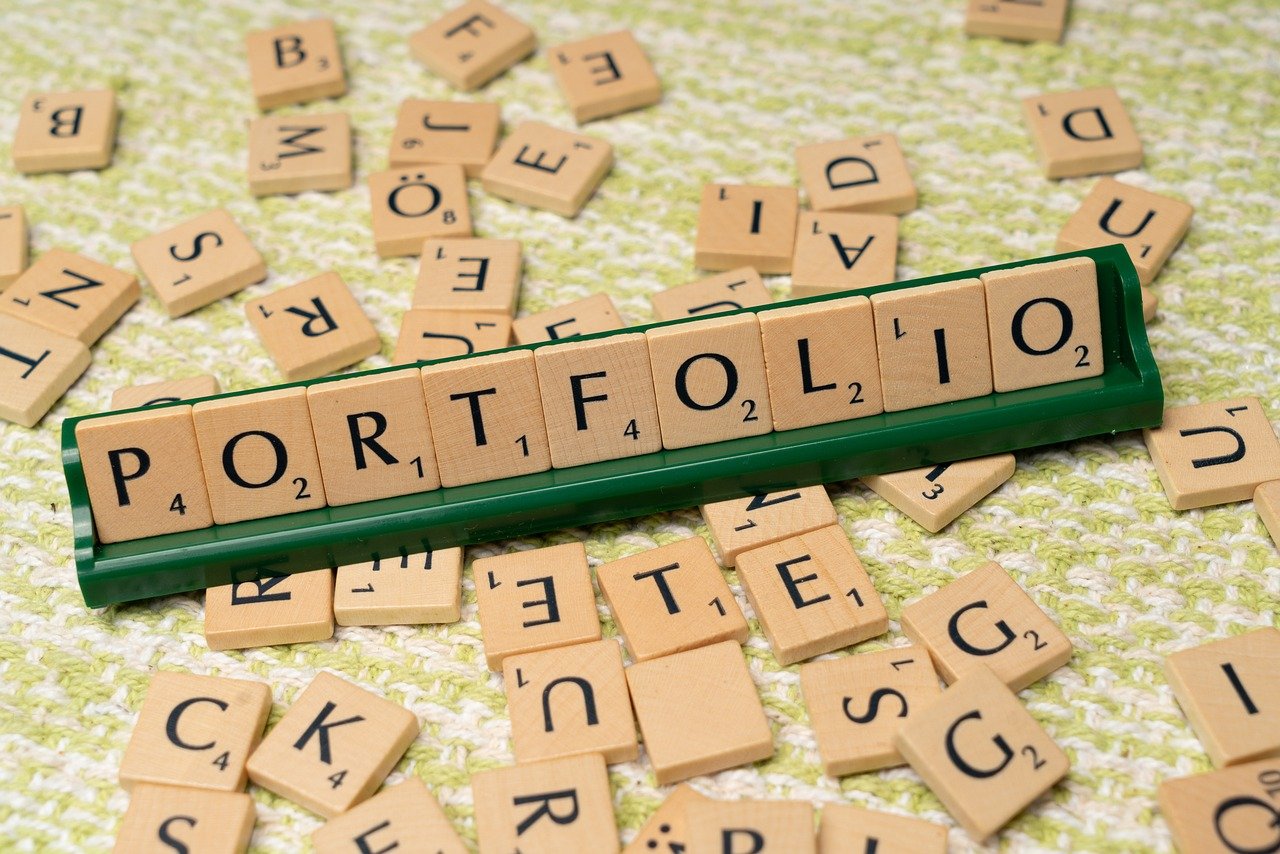
Writing Artist Statements
Writing an artist statement is more than just a formality; it's a gateway for your audience to understand your work on a deeper level. Think of it as the narrative thread that connects your art to your viewers. When crafting your statement, you want to convey your artistic vision, the influences that shape your creations, and the concepts behind your pieces. A well-thought-out artist statement can transform a simple viewing into an engaging experience, inviting your audience to explore the layers of meaning behind your artwork.
To start, consider these essential elements that can enhance your artist statement:
- Your Artistic Vision: What drives your creativity? Share your motivations and what you hope to express through your art.
- Influences: Discuss the artists, movements, or experiences that have shaped your style. This helps viewers relate to your journey.
- Concepts and Themes: Highlight the recurring themes in your work. Are you exploring identity, nature, or social issues? Provide context for your audience.
When writing your artist statement, remember to keep it authentic and personal. Use a conversational tone to make it relatable. Avoid jargon that might alienate your audience; instead, aim for clarity and accessibility. Imagine you're having a chat with a friend about your latest piece. How would you explain it to them?
Additionally, consider the length of your statement. Aim for about 150-300 words. This length is enough to convey your message without overwhelming the reader. Break it into short paragraphs for better readability, and don't hesitate to edit ruthlessly—every word should serve a purpose.
Finally, remember that your artist statement is not set in stone. As your work evolves, so should your statement. Regularly revisit and revise it to reflect your current artistic journey. This not only keeps your portfolio fresh but also ensures that your audience always has the most relevant context for your work.
Here are some common questions artists have when it comes to writing artist statements:
- What should I include in my artist statement? Focus on your artistic vision, influences, and the themes present in your work.
- How long should an artist statement be? Aim for 150-300 words to keep it concise yet informative.
- Can I change my artist statement over time? Absolutely! Your statement should evolve with your work and artistic journey.
- Should I use technical jargon? It's best to avoid jargon; aim for clarity and relatability.

Creating a Portfolio Website
In today's digital world, having a portfolio website is not just an option; it's a necessity for any artist looking to showcase their work effectively. Think of your website as your virtual gallery—a place where potential clients and employers can explore your creativity and skills without geographical limitations. But how do you create a portfolio website that stands out? Let's dive into the essential elements that will help you craft an engaging and professional online presence.
First and foremost, you need to select a platform that suits your needs. There are various website builders available, each offering different features. Some popular options include:
- Wix: User-friendly with a drag-and-drop interface, perfect for beginners.
- Squarespace: Known for its stunning templates and design flexibility.
- WordPress: Highly customizable, ideal for those who want more control over their site's functionality.
Once you've chosen a platform, the next step is to design your website in a way that reflects your artistic style. Your website's aesthetics should align with the type of artwork you create. For example, if your style is modern and minimalistic, your website should mirror that vibe. Use high-quality images of your artwork, as they are crucial for making a lasting impression. Blurry or poorly lit photos can detract from the beauty of your pieces, so invest time in capturing them well.
Another important aspect is the navigation. A user-friendly layout is essential for keeping visitors engaged. Organize your work into categories, such as illustrations, paintings, or digital art. This way, viewers can easily find what they're looking for without feeling overwhelmed. You might also consider adding a blog section where you can share your thoughts, process, and updates. This not only adds depth to your website but also helps with SEO (Search Engine Optimization), making it easier for potential clients to find you online.
Don't forget the importance of including a contact page. Make it easy for visitors to reach out to you for inquiries or collaborations. A simple contact form can be very effective, along with links to your social media profiles. This way, you create multiple avenues for potential clients or employers to connect with you.
Lastly, consider integrating features that enhance user experience. For instance, adding a slideshow of your best works on the homepage can grab attention immediately. Additionally, including testimonials from previous clients can build credibility and trust. Remember, your portfolio website is your digital business card, so make it count!
Q: How often should I update my portfolio website?
A: Regular updates are crucial. Aim to refresh your portfolio every few months to showcase new work and keep your content relevant.
Q: Can I use social media to promote my portfolio website?
A: Absolutely! Social media platforms are excellent tools for driving traffic to your portfolio. Share snippets of your work, behind-the-scenes content, and links to your website.
Q: What should I do if I don't have much artwork to display?
A: Focus on quality over quantity. Include your best pieces, even if it's just a few. You can also showcase personal projects or experiments to fill out your portfolio.
Frequently Asked Questions
- What should I include in my portfolio?
Your portfolio should showcase a selection of your best artwork, highlighting your unique style and technical skills. Include a variety of pieces that demonstrate your versatility, along with personal projects and collaborative work to give a comprehensive view of your artistic journey.
- How do I choose the right format for my portfolio?
The choice between a digital or physical portfolio depends on your target audience and the industry standards. Digital portfolios are great for accessibility and sharing, while physical portfolios provide a tactile experience that can be appreciated in traditional settings like galleries or interviews.
- How can I present my work professionally?
To present your work professionally, use high-quality images and ensure proper lighting. Organize your pieces logically, and consider the layout carefully to create a visually appealing experience that draws viewers into your artistic narrative.
- What is an artist statement, and why is it important?
An artist statement provides context to your work, conveying your artistic vision, influences, and the concepts behind your pieces. It helps viewers connect with your art on a deeper level and can enhance their understanding and appreciation of your work.
- How can I create a portfolio website?
Creating a portfolio website involves selecting a domain name, choosing a website builder, and designing a layout that showcases your work effectively. Include features like a blog, contact information, and links to your social media profiles to enhance your professional presence.



















